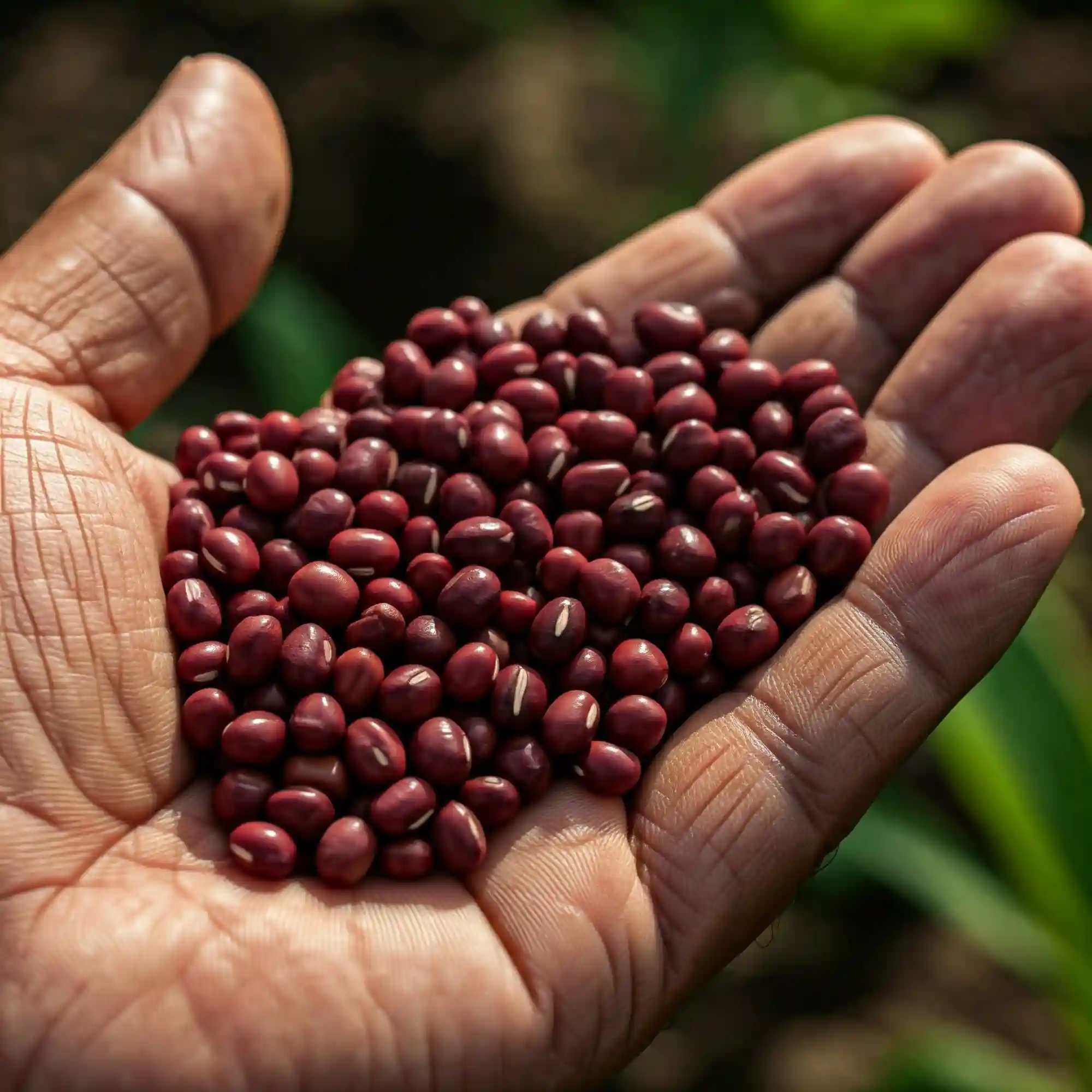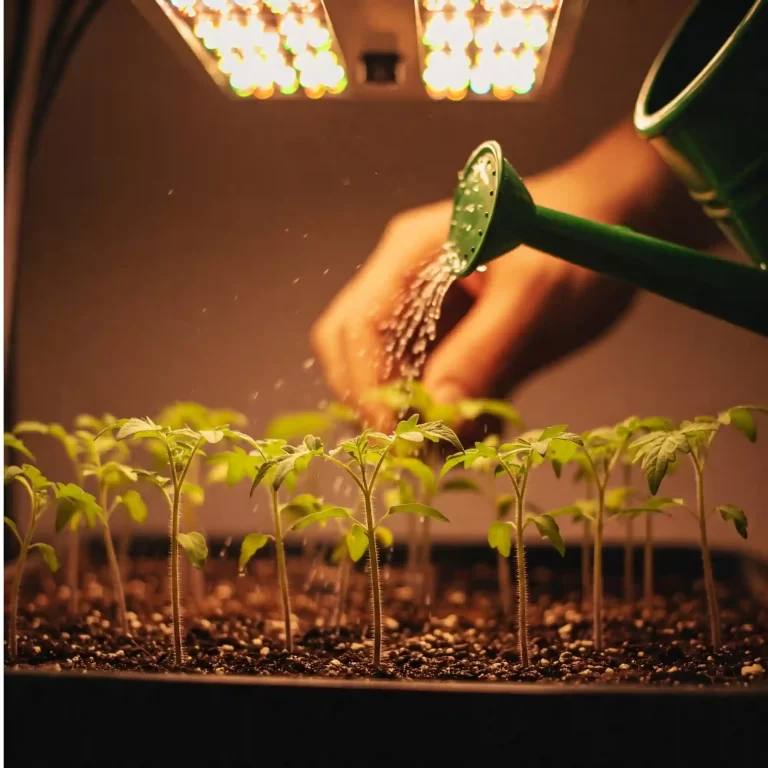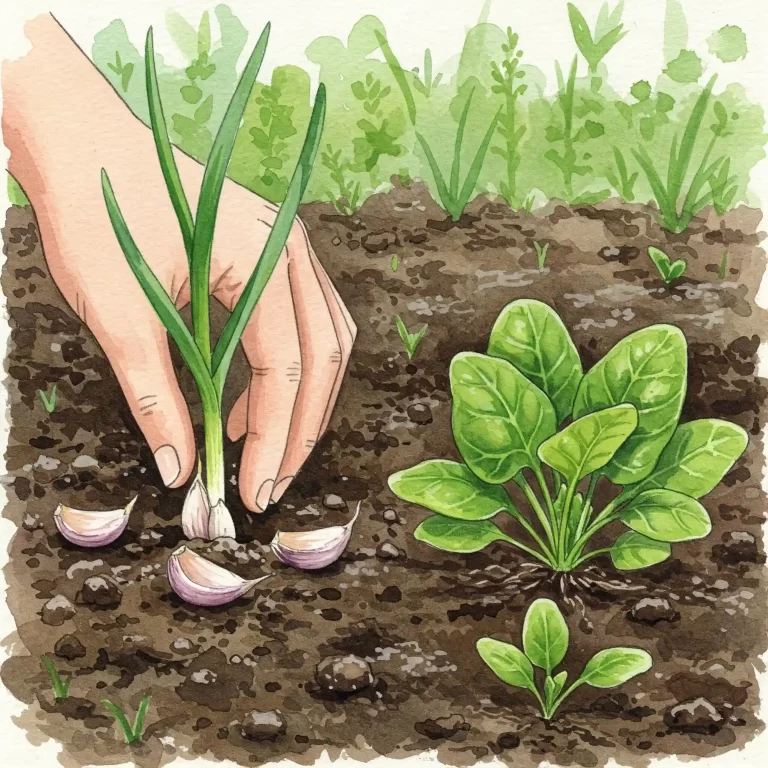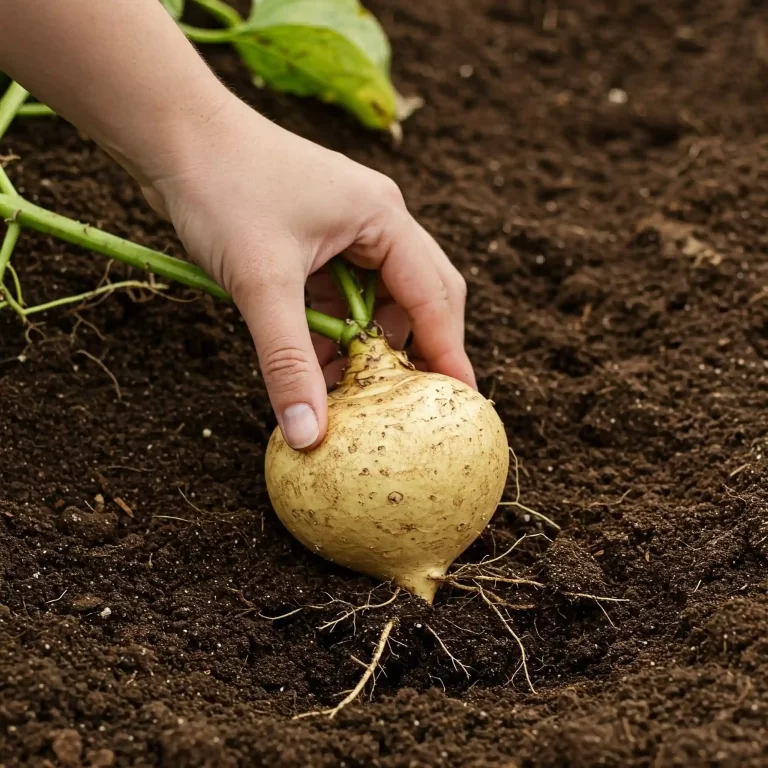Are you tired of the same old vegetables in your garden? Do you crave something unique, nutritious, and easy to grow? I know I did! Many gardeners I’ve spoken with express a desire to diversify their crops, seeking out interesting and healthy alternatives. This can be challenging, especially if you’re unsure where to start. You might have tried growing different things in the past, only to be met with disappointment and a sparse harvest. I’ve been there myself. But what if I told you there’s a rewarding and relatively simple legume you can cultivate right in your backyard? The solution is growing azuki beans! This comprehensive guide will walk you through everything you need to know about how to grow azuki beans vegetable, from seed to harvest, ensuring you enjoy a plentiful and satisfying yield.
Understanding Azuki Beans: A Gardener’s Introduction
Let’s dive into the world of azuki beans. Scientifically known as Vigna angularis, these small, reddish-brown beans have been cultivated for centuries, primarily in East Asia. I remember the first time I encountered them; I was intrigued by their unique appearance and the stories surrounding their use in traditional cuisine. They belong to the legume family, making them close relatives of common beans like kidney beans and black beans. But azuki beans have a distinct flavor profile—slightly sweet and nutty—that sets them apart.
Botanical Background and Origins:
Azuki beans are believed to have originated in the Himalayas and were domesticated in China before being introduced to Japan and other East Asian countries. They’ve played a significant role in these cultures, both as a food source and in traditional medicine. I find it fascinating how deeply intertwined these beans are with history and culture.
Culinary Uses:
In the kitchen, azuki beans are incredibly versatile. They’re a staple ingredient in Japanese confectionery, often used to make red bean paste (anko), a sweet filling for pastries, mochi, and other desserts. I’ve even tried making my own anko at home, and it’s surprisingly easy. Beyond sweets, azuki beans can be used in savory dishes like soups, stews, and salads. Their nutty flavor adds a unique dimension to these dishes.
Nutritional Powerhouse:
Beyond their culinary appeal, azuki beans are packed with nutrients. They’re an excellent source of:
- Protein: Essential for building and repairing tissues.
- Fiber: Promotes digestive health and helps regulate blood sugar levels.
- Iron: Necessary for oxygen transport in the blood.
- Potassium: Important for maintaining healthy blood pressure.
- Folate: Crucial for cell growth and development.
- Antioxidants: Protect cells from damage caused by free radicals.
I’ve noticed a significant boost in my energy levels since incorporating azuki beans into my diet. Here’s a quick nutritional comparison of azuki beans with other common beans:
Nutritional Comparison (per 100g cooked)
| Nutrient | Azuki Beans | Kidney Beans | Black Beans |
| Calories | 128 | 127 | 114 |
| Protein (g) | 7 | 8 | 8 |
| Fiber (g) | 7 | 6 | 7 |
| Iron (mg) | 3 | 2 | 2 |
Why Grow Your Own Azuki Beans?
I believe there are several compelling reasons to grow your own azuki beans:
- Freshness and Flavor: Homegrown azuki beans taste noticeably fresher and more flavorful than store-bought ones. You’ll be amazed at the difference!
- Control Over Growing Practices: When you grow your own, you have complete control over the growing process. You can choose to grow them organically, avoiding synthetic pesticides and fertilizers. This is something I value greatly.
- Cost Savings: Growing your own food can significantly reduce your grocery bill over time.
- Gardening Satisfaction: There’s a unique sense of satisfaction that comes from nurturing a plant from seed to harvest. It’s a rewarding experience that I highly recommend.
- Access to Unique Varieties: You may find it easier to source unique or heirloom azuki bean varieties as seeds than finding them in your local store.
Growing azuki beans offers a unique opportunity to connect with nature, enjoy fresh and nutritious food, and add a touch of East Asian culinary tradition to your garden.
Preparing for Planting: Creating the Ideal Environment
Now that you understand the wonderful world of azuki beans, let’s get down to the practical side of things: preparing the ideal environment for these plants to thrive. Just like any other living organism, azuki beans have specific needs when it comes to their growing conditions. Getting these right is crucial for a successful harvest. From my experience, paying close attention to these details in the beginning makes a huge difference later on.
Choosing the Right Location:
The first step in preparing for planting is selecting the perfect spot in your garden. Azuki beans, like most beans, are sun-loving plants. They need at least 6-8 hours of direct sunlight per day to grow and produce well. I’ve found that a south-facing spot in my garden works best, as it gets the most sun throughout the day. If you don’t have a south-facing spot, any area that receives ample sunlight will do.
Besides sunlight, you also need to consider the soil type. Azuki beans prefer well-draining soil that is rich in organic matter. I always amend my soil with compost before planting any beans. This not only improves drainage but also provides essential nutrients for the plants. If your soil is heavy clay or sandy, you may need to add more organic matter to improve its structure.
Soil Preparation:
Once you’ve chosen the right location, it’s time to prepare the soil. This involves several steps:
- Clearing the area: Remove any weeds, rocks, or debris from the planting area.
- Tilling the soil: Loosen the soil to a depth of about 12 inches. This will improve drainage and allow the roots to grow easily.
- Amending the soil: Add compost or other organic matter to the soil. This will improve its fertility and drainage.
- Leveling the area: Rake the area smooth to create a level planting surface.
When to Plant Azuki Beans:
The timing of planting is crucial for azuki beans. They are warm-season crops, meaning they need warm soil and air temperatures to germinate and grow. I usually wait until the danger of frost has passed and the soil temperature is at least 50°F (10°C) before planting my azuki beans. This is usually a few weeks after the last frost in my area.
If you live in a colder climate with a shorter growing season, you can start your azuki bean seeds indoors a few weeks before the last frost. This will give them a head start and allow you to harvest them earlier.
Growing Azuki Beans in Containers:
If you don’t have a garden or have limited space, you can also grow azuki beans in containers. This is a great option for urban gardeners or those with small balconies or patios. When growing azuki beans in containers, it’s important to choose a pot that is at least 12 inches deep and has drainage holes. You should also use a well-draining potting mix that is rich in organic matter.
I’ve found that growing azuki beans in containers can be just as rewarding as growing them in the ground. The key is to provide them with the same growing conditions as you would in a garden: plenty of sunlight, well-draining soil, and regular watering.
Planting Azuki Beans: From Seed to Sprout
Now that you’ve prepared the perfect environment, it’s time to get those azuki beans in the ground! This is the part I always find most exciting – the beginning of new life in the garden. Whether you’re a seasoned gardener or just starting out, planting azuki beans is a straightforward process. I’ll guide you through the steps, sharing some tips I’ve picked up along the way.
Direct Sowing vs. Starting Indoors:
There are two main methods for planting azuki beans: direct sowing and starting indoors. Direct sowing involves planting the seeds directly into the garden bed, while starting indoors means germinating the seeds in containers before transplanting them.
- Direct Sowing: This is the most common and easiest method, especially if you live in a region with a long growing season. I prefer this method as it minimizes transplant shock and allows the plants to establish their roots directly in the garden soil.
- Starting Indoors: This is a good option if you live in a colder climate with a shorter growing season. Starting seeds indoors gives them a head start and allows you to harvest them earlier.
Seed Depth and Spacing:
Whether you’re direct sowing or starting indoors, it’s important to plant the seeds at the correct depth and spacing.
- Seed Depth: Plant azuki bean seeds about 1-2 inches deep. I usually make a small hole with my finger or a dibber and then gently place the seed in the hole.
- Spacing: Space the seeds about 2-4 inches apart in rows that are 18-24 inches apart. This gives the plants enough room to grow and prevents overcrowding.
Germination Time and Conditions:
Azuki bean seeds typically germinate within 7-10 days, depending on the soil temperature and moisture levels. I’ve found that keeping the soil consistently moist, but not waterlogged, is crucial for successful germination.
Here are some tips for ensuring good germination:
- Soil Temperature: The ideal soil temperature for germination is between 60-70°F (15-21°C).
- Moisture: Keep the soil consistently moist but not waterlogged.
- Sunlight: While the seeds don’t need sunlight to germinate, they will need it once they sprout.
How to Grow Azuki Beans Vegetable from Seed in Cold Climates:
If you live in a colder climate, starting your azuki bean seeds indoors is a great way to get a head start on the growing season. Here’s how I do it:
- Start seeds indoors 3-4 weeks before the last frost.
- Use small containers or seed trays filled with a well-draining potting mix.
- Plant the seeds about 1 inch deep and keep the soil moist.
- Place the containers in a warm, sunny location.
- Once the seedlings have developed a few sets of true leaves, you can transplant them into the garden.
Hardening Off Seedlings:
Before transplanting your seedlings into the garden, it’s important to harden them off. This process gradually acclimates the seedlings to the outdoor conditions, preventing transplant shock.
Here’s how to harden off seedlings:
- Start by placing the seedlings outdoors in a sheltered location for a few hours each day.
- Gradually increase the amount of time they spend outdoors each day.
- After about a week, the seedlings should be ready to be transplanted into the garden.
By following these planting tips, you’ll give your azuki beans a strong start and set them up for a successful growing season.
Caring for Your Azuki Bean Plants: Nurturing Growth
Now that your azuki bean seeds have sprouted and are growing, it’s time to provide them with the care they need to thrive. This involves regular watering, fertilizing, weeding, and providing support if necessary. I’ve found that consistent care throughout the growing season is key to a bountiful harvest.
Watering Azuki Beans:
Azuki beans need consistent moisture to grow well, but they don’t like to be waterlogged. I usually water my azuki bean plants deeply once or twice a week, depending on the weather conditions. The key is to water at the base of the plant, avoiding wetting the leaves, which can encourage fungal diseases.
Here are some watering tips I’ve found helpful:
- Water early in the morning: This allows the leaves to dry before nightfall, reducing the risk of fungal diseases.
- Water deeply: Water the soil deeply to encourage deep root growth.
- Avoid overwatering: Overwatering can lead to root rot, which can kill your plants.
- Use a soaker hose or drip irrigation: This can help to deliver water directly to the roots and prevent water from splashing on the leaves.
Fertilizing Azuki Beans:
Azuki beans are legumes, which means they can fix nitrogen from the atmosphere. This means they don’t need as much nitrogen fertilizer as other plants. However, they can benefit from other nutrients, such as phosphorus and potassium.
I usually fertilize my azuki bean plants once or twice during the growing season with a balanced fertilizer. You can also use organic fertilizers, such as compost tea or manure.
Weeding and Mulching:
Weeds can compete with your azuki bean plants for water and nutrients. It’s important to keep the area around your plants weed-free. I usually hand-weed my garden, but you can also use a hoe or other weeding tools.
Mulching can also help to suppress weeds and conserve moisture in the soil. I usually use a layer of organic mulch, such as straw or wood chips.
Supporting the Plants:
Some varieties of azuki beans may need support as they grow. This is especially true for taller varieties. You can use stakes, trellises, or other supports to help keep the plants upright.
I’ve found that providing support for my azuki bean plants can help to improve air circulation and prevent fungal diseases. It can also make harvesting easier.
By following these care tips, you can help your azuki bean plants to thrive and produce a bountiful harvest.
Protecting Your Crop: Pest and Disease Management
As your azuki bean plants grow and mature, it’s crucial to protect them from potential threats like pests and diseases. I’ve learned over the years that proactive prevention and early detection are key to minimizing damage and ensuring a healthy harvest. Let’s delve into some common issues and how to address them.
Common Azuki Bean Pests:
While azuki beans are generally resilient, they can be susceptible to a few common pests:
- Aphids: These small, soft-bodied insects suck sap from plants, causing them to weaken and become distorted. I often find them clustered on new growth and under leaves.
- Bean Beetles (Mexican Bean Beetles): Both the adults and larvae of these beetles feed on leaves, creating characteristic lacy damage. They can quickly defoliate plants if left unchecked.
- Spider Mites: These tiny mites thrive in hot, dry conditions and can cause stippling and discoloration on leaves. You’ll often see fine webbing on infested plants.
- Leafhoppers: These small, wedge-shaped insects also feed on plant sap and can transmit diseases.
Organic Pest Control Methods:
I always prioritize organic methods for pest control in my garden. Here are some effective strategies I use:
- Handpicking: For larger pests like bean beetles, handpicking them off the plants and dropping them into a bucket of soapy water is a simple and effective method.
- Insecticidal Soap: This is a safe and effective way to control aphids, spider mites, and leafhoppers. I mix it according to the instructions and spray it directly on the affected plants.
- Neem Oil: This natural oil derived from the neem tree can disrupt the life cycle of many pests. I use it as a preventative spray or to treat existing infestations.
- Companion Planting: Planting certain herbs and flowers alongside azuki beans can help repel pests. For example, I’ve found that marigolds and nasturtiums can deter bean beetles.
- Beneficial Insects: Encourage beneficial insects like ladybugs, lacewings, and parasitic wasps in your garden. They are natural predators of many common garden pests.
Common Azuki Bean Diseases and Prevention Strategies:
Azuki beans can also be affected by certain diseases, particularly in humid conditions:
- Root Rot: This fungal disease can occur in waterlogged soil. Ensuring good drainage is crucial for prevention.
- Powdery Mildew: This fungal disease appears as a white powdery coating on leaves. Good air circulation and avoiding overhead watering can help prevent it.
- Bacterial Blight: This bacterial disease causes dark, water-soaked spots on leaves and pods. Using disease-free seeds and practicing crop rotation can help prevent it.
Preventative Measures:
Besides specific treatments, these general practices can help prevent pest and disease problems:
- Crop Rotation: Avoid planting beans in the same spot year after year. This can help prevent the buildup of soilborne pests and diseases.
- Good Air Circulation: Space your plants adequately to allow for good air circulation, which can help prevent fungal diseases.
- Watering Practices: Water at the base of the plants and avoid overhead watering to reduce the risk of fungal diseases.
- Regular Monitoring: Regularly inspect your plants for signs of pests or diseases. Early detection is key to effective management.
By implementing these pest and disease management strategies, you can protect your azuki bean crop and ensure a healthy and abundant harvest.
Harvesting and Storing Your Azuki Beans: Enjoying Your Bounty
After all your hard work and care, the moment you’ve been waiting for has arrived: harvest time! This is the most rewarding part of gardening, when you get to reap the fruits (or in this case, beans) of your labor. I always feel a sense of accomplishment when I gather my homegrown produce, and I’m excited to share the process of harvesting and storing azuki beans with you.
When to Harvest Azuki Beans:
Knowing when to harvest azuki beans is crucial for optimal flavor and quality. Here are some signs of maturity to look for:
- Dry Pods: The pods should be dry and brittle, and they should easily snap open.
- Bean Color: The beans inside the pods should be their characteristic reddish-brown color.
- Leaf Drop: The leaves of the plant may start to turn yellow and drop off.
I usually start checking my azuki bean plants for ripeness a few weeks after the flowers have faded. The exact time will depend on the variety you’re growing and the weather conditions.
How to Harvest Azuki Beans:
Harvesting azuki beans is a simple process:
- Pull the entire plant from the ground or snap off the dry pods.
- Spread the pods out on a screen or tray to dry completely.
- Once the pods are thoroughly dry, you can shell the beans by hand or by threshing them.
Drying and Storing Azuki Beans:
Proper drying and storage are essential for preserving your azuki beans for later use. Here’s what I do:
- Drying: Spread the shelled beans out on a screen or tray in a well-ventilated area. Allow them to dry for several days, or until they are hard and dry to the touch.
- Storing: Once the beans are completely dry, store them in airtight containers in a cool, dry place. They can be stored for up to a year.
I’ve found that storing my azuki beans in glass jars with tight-fitting lids works best. You can also use plastic containers or freezer bags.
By following these harvesting and storing tips, you can enjoy your homegrown azuki beans for months to come.
Maximizing Your Harvest: Tips for Success
Growing azuki beans can be a truly fulfilling experience, and with a few extra tips and tricks, you can maximize your harvest and enjoy even greater success. I’ve gathered some of the most effective strategies I’ve learned over the years, and I’m excited to share them with you.
Companion Planting for Azuki Beans:
Companion planting is a technique where you plant different species together for mutual benefit. Certain plants can help deter pests, improve soil conditions, or even enhance the flavor of neighboring crops. Here are some excellent companion plants for azuki beans:
- Corn: Provides support for climbing bean varieties.
- Summer Savory: Repels bean beetles.
- Rosemary: Deters bean beetles and other pests.
- Marigolds: Repel nematodes and other soil pests.
- Carrots: Improve soil conditions and deter some pests.
Crop Rotation with Azuki Beans:
Crop rotation involves changing the location of your crops each year. This helps to prevent the buildup of soilborne pests and diseases and also improves soil fertility. Azuki beans, as legumes, fix nitrogen in the soil, making them a great preceding crop for heavy feeders like corn or tomatoes.
Addressing Specific Gardening Challenges:
- How to Grow Azuki Beans Vegetable for a High Yield in Small Gardens: Even if you have limited space, you can still enjoy a bountiful harvest of azuki beans. Consider growing bush varieties, which are more compact. You can also maximize vertical space by using trellises or other supports for climbing varieties.
- How to Grow Azuki Beans Vegetable as a Cover Crop for Soil Improvement: Azuki beans make an excellent cover crop, especially in the fall. They help to prevent soil erosion, suppress weeds, and fix nitrogen in the soil, improving its overall health for subsequent crops.
- How to Grow Azuki Beans Vegetable in Raised Beds for Better Drainage: If you have heavy clay soil or experience waterlogging, raised beds can provide the perfect solution. They improve drainage and create a more favorable environment for azuki bean growth.
Additional Tips for Success:
- Choose the Right Variety: Select a variety that is well-suited to your climate and growing conditions.
- Provide Adequate Support: If you’re growing climbing varieties, provide them with sturdy supports to climb on.
- Monitor for Pests and Diseases: Regularly inspect your plants for signs of pests or diseases and take action promptly.
- Harvest at the Right Time: Harvest your azuki beans when the pods are dry and the beans are mature for the best flavor and quality.
By implementing these tips and strategies, you can maximize your azuki bean harvest and enjoy the rewards of your gardening efforts. Growing azuki beans can be a truly enriching experience, and with a little care and attention, you can enjoy a bountiful harvest of these nutritious and versatile legumes.
FAQ: Answering Your Azuki Bean Growing Questions
I understand that even with detailed guides, you might still have some specific questions about growing azuki beans. I’ve compiled a list of frequently asked questions that I’ve encountered over the years, and I’m here to provide you with clear and concise answers.
- How to grow azuki beans vegetable in containers at home?
Growing azuki beans in containers is a great option for those with limited space. Here are some key considerations:- Container Size: Choose a container that is at least 12 inches deep and has drainage holes.
- Potting Mix: Use a well-draining potting mix that is rich in organic matter.
- Sunlight: Place the container in a location that receives at least 6-8 hours of direct sunlight per day.
- Watering: Water regularly, but avoid overwatering.
- Support: Provide support for climbing varieties.
- How to grow azuki beans vegetable organically in my backyard?
Growing azuki beans organically involves using natural methods for soil preparation, pest control, and fertilization. Here are some tips:- Soil Amendments: Use compost, manure, or other organic matter to improve soil fertility.
- Pest Control: Use organic pest control methods, such as handpicking, insecticidal soap, or neem oil.
- Fertilization: Use organic fertilizers, such as compost tea or manure.
- How to grow azuki beans vegetable from seed in cold climates?
Starting azuki beans indoors is crucial in colder climates. Here’s how:- Start Seeds Indoors: 3-4 weeks before the last frost.
- Use Small Containers: Or seed trays filled with a well-draining potting mix.
- Plant Seeds: About 1 inch deep and keep the soil moist.
- Provide Warmth and Sunlight: Place containers in a warm, sunny location.
- Harden Off Seedlings: Gradually acclimate seedlings to outdoor conditions before transplanting.
- What is the best way to grow azuki beans vegetable for beginners?
For beginners, I recommend direct sowing bush varieties in a sunny location with well-draining soil. Here are some simple steps:- Prepare the Soil: Amend with compost and ensure good drainage.
- Plant Seeds: 1-2 inches deep and 2-4 inches apart.
- Water Regularly: But avoid overwatering.
- Weed Regularly: To prevent competition for resources.
- Harvest When Pods Are Dry: And beans are mature.
Additional Common Questions:
- How long do azuki beans take to grow?
Azuki beans typically take about 90-120 days to mature, depending on the variety and growing conditions. - Are azuki beans easy to grow?
Yes, azuki beans are relatively easy to grow, making them a great option for beginner gardeners. - What are the benefits of growing azuki beans?
Azuki beans are nutritious, versatile, and relatively easy to grow. They also make a great cover crop for improving soil health.
I hope these answers help you in your azuki bean growing journey. If you have any further questions, feel free to reach out, and I’ll be happy to assist you.
Conclusion: Embracing the Azuki Bean Growing Journey
Growing azuki beans can be a truly rewarding experience, connecting you with nature and providing you with a unique and nutritious food source. I encourage you to embrace the journey, experiment with different varieties, and discover the joy of cultivating your own azuki beans.
Key Takeaways:
- Azuki beans are a versatile and nutritious legume that is relatively easy to grow.
- Proper soil preparation, planting techniques, and ongoing care are essential for a successful harvest.
- Organic pest and disease management practices can help protect your crop without harming the environment.
- Harvesting and storing your azuki beans correctly will ensure you can enjoy them for months to come.
I hope this comprehensive guide has provided you with the knowledge and confidence to start growing your own azuki beans. Remember, gardening is a journey of learning and discovery, so don’t be afraid to experiment and have fun along the way.




